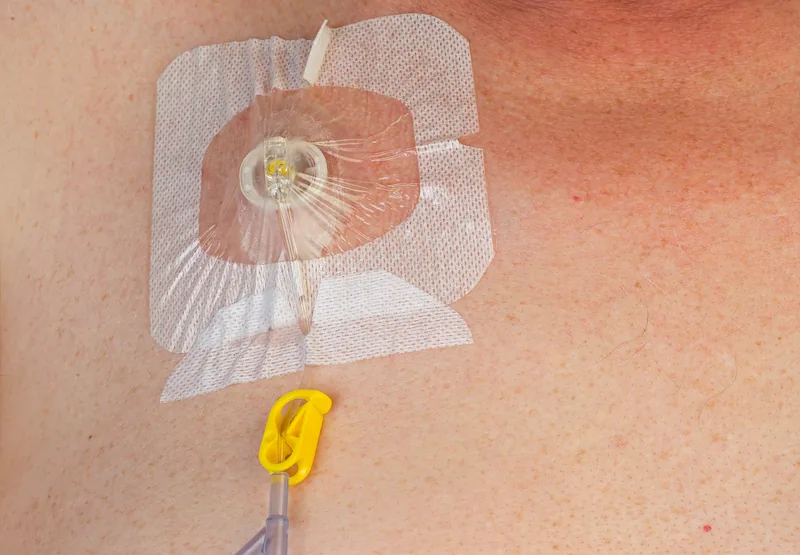Portacath
At Long Island Laparoscopic Doctors, our surgeons frequently place portacaths for patients undergoing chemotherapy or other treatments that require frequent or long-term IVs.

What is a Portacath?
A portacath, sometimes spelled as port-a-cath, is a device placed under the skin of the chest, usually on the right side. This device is connected to a tube (catheter), which is placed in a large vein called the superior vena cava, giving direct access for blood draws, medications, and
Trusted Source
National Cancer Institute. Port-a-cath
Go to Source
fluids.

For patients who require chemotherapy or have other needs that require frequent or long-term intravenous (IV) medication administration, injections, or blood draws, benefits of a portacath include:
- Painless administration of medications and fluids
- Reduced risk of infection
- Simple maintenance and care
- Discreet appearance
- Can remain safely in place for years
Preparing for Portacath Insertion
Before your portacath insertion, you may be asked to remove certain medical devices, such as a continuous glucose monitor (CGM) or insulin pump. If you rely on these devices, discuss your diabetes care with your doctor prior to your portacath procedure.
Patients who undergo general anesthesia are not permitted to drive themselves home after their portacath placement, so please make arrangements for transportation with a friend or family member. We can also help you find reliable transportation in the area.
The Portacath Procedure
Portacath placement is an outpatient procedure that takes roughly one hour. Before the procedure begins, your surgeon will inject local anesthetic into the area around the implantation site. For some patients, general anesthesia is preferred.
To place a portacath, the surgeon makes a small incision under the collarbone, which will form a pocket to house the port under the skin. The catheter is inserted through the second incision, then attached to the port. The surgeon will then use an X-ray to ensure proper placement of the portacath.
Recovery After Portacath Placement
It is normal to experience bruising and discomfort or soreness at the incision site after your portacath is placed. This will naturally resolve within a few days, and you may take over-the-counter pain medication to help you stay comfortable. You may also find that it is painful to wear a seatbelt after your portacath placement: our patients find that it is helpful to place a folded towel or pillow between their body and the seatbelt.
Frequently Asked Questions About Portacaths
Is portacath implantation painful?
No. Before implantation, you will be given either local or general anesthesia so you will feel nothing during the procedure. You may feel a bit sore for the first few days after portacath placement, but after that you should feel no pain.
What kind of maintenance does a portacath require?
From time to time, you will need to flush your portacath by rinsing it with saline. This helps prevent blockages or clots.
How long can my portacath stay in place?
With simple care and proper maintenance, a portacath can remain in place for years.
Is portacath removal painful?
No. Portacath removal is a very brief procedure that is performed with local anesthesia, so pain should not be a part of your experience.
Contact Long Island
Laparoscopic Doctors
Please contact the Long Island Laparoscopic Doctors to learn more about portacath placement.

1 National Cancer Institute. Port-a-cath. Available: https://www.cancer.gov/publications/dictionaries/cancer-terms/def/port-a-cath. Accessed March 29, 2023.
The doctors at Long Island Laparoscopic Doctors have either authored or reviewed and approved this content.
Page Updated: